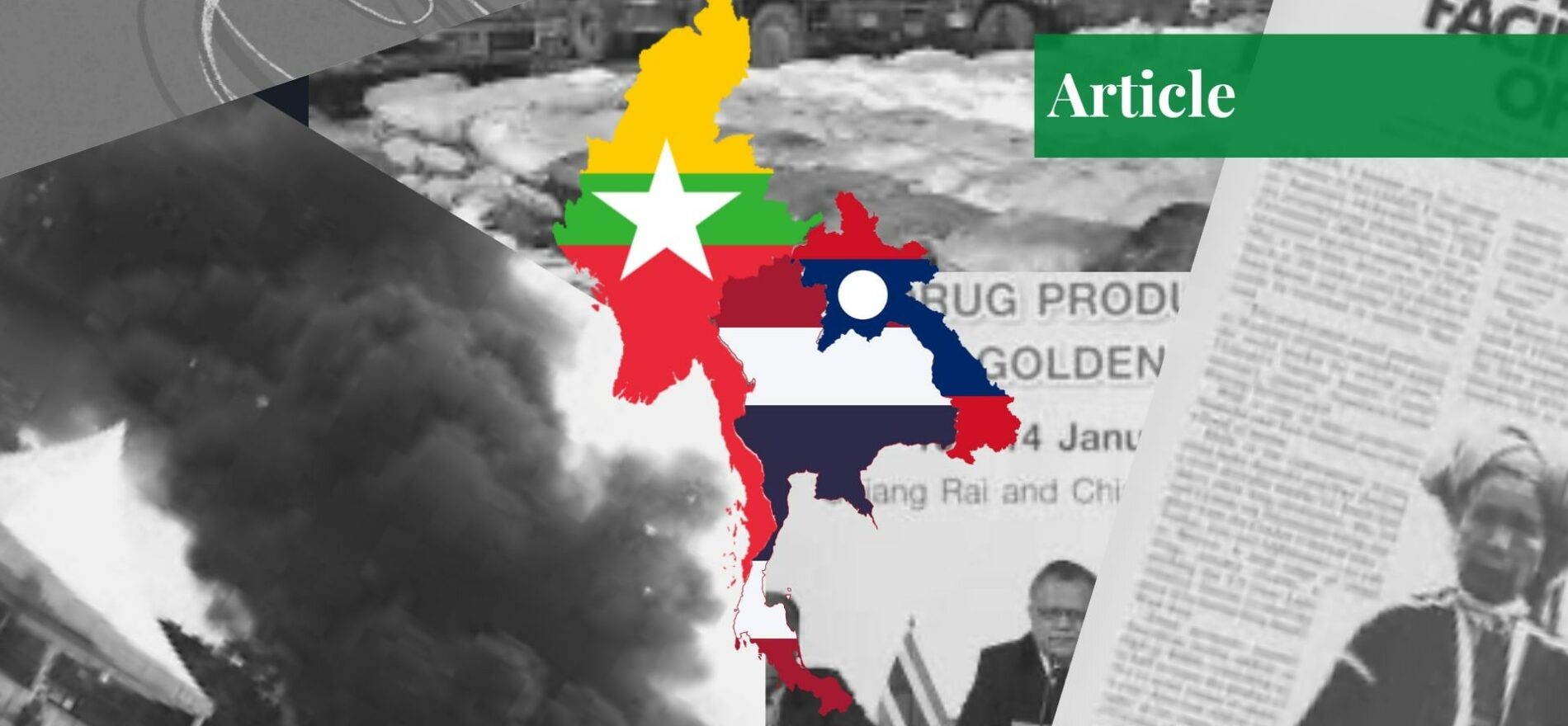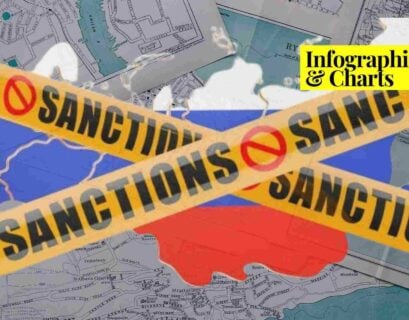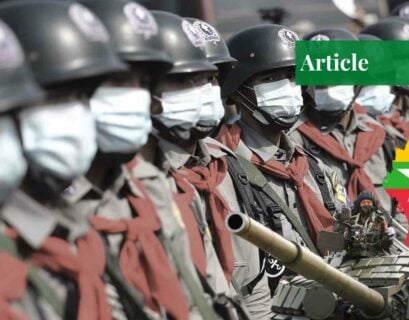Hafsa Ammar is a graduate of the National Defence University, Islamabad. Her areas of expertise are narrative building and propaganda warfare, centered around the Soviet Union and modern-day Russia.
The Golden Triangle
Famously dubbed as the “Golden Triangle,” the region is located in the forestry depths of Southeast Asia between the borders of Thailand, Laos, and Myanmar. The region has historically been seen as a primarily inaccessible hub of crime due to its location and the lack of transportation infrastructure. Roads, wherever available, get overrun during monsoon season and the forest cover is too dense for air travel.
The areas most rife with poppy cultivation are present at high altitudes where other cash crops – such as rice and wheat – do not grow. The terrain is mountainous and home to multiple religious and ethnic groups which have inadvertently only contributed to the conflict brewing in the region.
Drug Trade – Opium and Its Derivatives
Globalization is seen as a phenomenon of change and modernization. While that fact does hold water, it also works in parallel to the dark side of international affairs and industries. Just as the rest of the world has, the drug trade and trafficking industry has also modernized. Opium or opiates, although present, do not have the same grab on the masses as they once did. Rather, they have transformed into more harmful synthetic derivatives such as heroin and fentanyl. Ketamine and Methamphetamine pills are the new plagues being seized by the Thai army in the Golden Triangle region.
History of the Golden Triangle
The Golden Triangle, historically renowned for opium cultivation dating back to the 16th and 17th centuries, witnessed a significant transformation in its opium economy following World War II. Post the Vietnam War, the demand for heroin by US troops played a pivotal role in elevating the region’s opium trade into a highly profitable heroin economy.
Despite crop eradication efforts since 1964, the United States, suspecting diversion of assistance to counterinsurgency operations, halted support to the Burmese government’s anti-drug initiatives. The subsequent lack of enforcement, favorable weather conditions, and increased cultivation led to a substantial surge in opium production, facilitating lower prices and a wider prevalence of heroin use. Coined in the 1950s, the term “Golden Triangle” has become synonymous with the region’s tumultuous history, particularly concerning its notorious opium trade.
Role of Colonial Powers
Colonial powers have used Asia as their runway into the modern and industrialized world of the 21st century. They based a massive portion of their budget for wars and manual labor on the profits raked in by their participation in the drug trade. Opium wars were fought between the British Crown and China from 1836-1842 and from 1856-1860. Britain emerged victorious in both wars and China had to lay down its pride and accept the consequences, one of which was the increased opium trade by the British to the Chinese masses. There was a severe and crippling impact on the people as a “recreational drug” soon evolved into an unforgiving addiction.
The addiction snowballed into a social calamity till China had to place several criminal charges on its usage and trade. The French used opium trade profits to reign over much of Indochina and were allies with the British during the opium wars as well. Even the Dutch colonizers played a big role in propagating drug smuggling in the Dutch East Indies. After all of the above-mentioned actors played their roles, Asia was left vulnerable to a fault.
Myanmar, formerly known as Burma, was the main producer of opium with its poppy fields in the Shan state highlands. Then followed Laos which had a slightly lesser growth, and then finally Thailand – formerly known as Siam – which was responsible for the least amount of drug production and even completely stopped production at a time. However, Thailand did see a resurgence in drug smuggling and trade in 2007 which restarted the issue.
Contemporary Situation
The major actors of the current-day conflict are organized crime syndicates, their drug trafficking rings, and operations and law enforcement agencies such as the Thai security forces. In recent news, the security forces managed to take out five operatives of a smuggling ring and seized a bag full of synthetic drugs (pills). Thailand has a history of proceeding with extreme force in cracking down on drug smuggling and usage.
The current-day military agency situated on the frontlines is the “Pha Muang” Taskforce. The soldiers reported that although they have made over three hundred arrests and confiscated millions of pills and drugs, the smugglers are still smart enough to outwit them sometimes as they keep changing their routes and figuring out newer ways to sneak the contraband past checkpoints. The two major regions which have been bearing the brunt of the Thai militant operations are Chiang Saen, Chiang Mai, and Chiang Rai. Thailand has essentially been the major hub of almost all opium flowing out of Myanmar. Bangkok today is assumed to be home to the world’s biggest meth market.
The United Nations Office on Drugs and Crime (UNODC) shone a light on a rise in drug manufacturing and smuggling out of Myanmar in 2021 especially right after the insurgency-stifled state had undergone a military coup. The regime change made the state weak enough to be exploited by drug trafficking syndicates. The year 2021 alone was one within which over a billion methamphetamine pills were captured.
Way Forward
The drug trafficking industry is almost as vast and profitable as the war economy due to its widespread nature and intrinsic linkage with conflict. There are many ways to counter this industry even if it cannot be eliminated. This includes international attention and proactiveness as shown in various agreements undertaken such as the MOU signed by China, Thailand, Vietnam, Laos, Cambodia, and Myanmar to monitor and limit the spread of drugs in Asia.
Even the foremost Asian international platform, ASEAN (Association of Southeast Asian Nations), set up a gathering of state leaders and ministers in Thailand in 2000 to address the non-traditional security threat posed by opiate and heroin smuggling. It led to the formation of ACCORD which was deemed an active response to the drug epidemic. Another means to face the problem was through the cooperation of states that were bordering the Golden Triangle, this included an increase in checkpoints, law enforcement duties, and joint armed operations.
The above-mentioned responses are direct actions to manage the massive drug trafficking operations. However, to ultimately resolve this issue down to its root causes, there is a need for indirect routes as well which include socio-economic development at all levels of society, rehabilitation centers, employment opportunities, social welfare schemes, political stability, and local participation in formulating and implementing sustainable alternatives.
If you want to submit your articles, research papers, and book reviews, please check the Submissions page.
The views and opinions expressed in this article/paper are the author’s own and do not necessarily reflect the editorial position of Paradigm Shift.


















